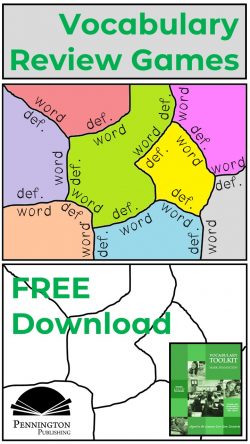How to Memorize Vocabulary

Comprehensive Vocabulary
I’m often asked how to memorize vocabulary. There is just no doubt about it. Society judges us by the words we use. Vocabulary is the key linguistic measure of intelligence on IQ tests. It is the most statistically significant correlation on the SAT 1 sentence completions and passage-based reading components. It identifies a well-educated man or woman perhaps more that any other characteristic.
Many people want to improve their vocabularies, but memorization and retention are the key roadblocks. Not everyone has a natural ability to memorize. However, memorization is a skill that can be learned and improved upon with commitment and practice.
Let’s begin by understanding how we learn vocabulary. We learn most of our first 10,000 survival words through oral language. Beyond this number, most words are learned through reading, by using surrounding context clues to figure out the meanings of unknown words. Readers who read challenging text with academic language and unfamiliar words learn much more vocabulary than readers who stick with the T.V. Guide and People magazines. Good readers have good vocabularies. It’s as simple as that.
We also learn vocabulary through the structural components of our words. Many teachers do a wonderful job of teaching the building bocks of our academic words. Memorizing the common Greek and Latin word parts significantly increases word recognition.
Finally, we do learn vocabulary by making a conscious effort to learn and retain the meanings of new words. Becoming a word sleuth works. However, detectives have to investigate; they can’t just wait for the evidence to show up on their doorsteps. Those who want to learn new vocabulary have to intentionally expose themselves to new words. How? Read more challenging text, improve your ability to use context clues, learn the common Greek and Latinates, and use resources to practice “word play,” such as crosswords.
Practical Tips to Memorize Vocabulary
1. People start forgetting immediately after learning, so make a conscious effort to practice new words when you are exposed to them. Don’t wait. Information that is practiced immediately is retained. After the first few hours, the “forgetting cycle” kicks in.
2. People remember events or information that is rehearsed frequently. Frequent recitation improves retention. Repeat. Repeat. Repeat. Practice. Practice. Practice. Then repeat. Short study periods and small amounts of information divided by periods of rest produces better retention than cramming. Periodic practice of new vocabulary will keep the words stored in the long term memory. Use the words in your everyday speech. Talk to yourself and you won’t sound pretentious.
3. People remember information best when that information is organized in a structured manner.
Key a simple vocabulary journal or use index cards to keep track of new words. Write down the word, the definition (in your own words), and a context clue sentence that shows the meaning of the word.
4. People remember information that has clear multi-sensory connections. Practice new words out loud and in writing. Make a conscious effort to visualize a connection between new words and their meanings through concrete images. For example, precocious means someone who is ahead of his or her time. Picture a toddler you know, dressing up in a tuxedo, saying “I am precocious.”
5. Use vivid imagery. Make the effort to associate a new word with something else that produces memorable imagery. For example, a stunning rainbow connected with the new word spectrum is much more memorable than a simple definition. Use brief illustrations in your vocabulary journal or on your index cards to reinforce the images.
6. Connect what we naturally remember to newly acquired vocabulary. People remember events and information that are made exciting, interesting, or even embarrassing. Connect the discovery of a piece of spinach between your teeth to a new word, such as mortifying.
7. People remember information best that is personalized. Place yourself front and center into your memory association to better retain word meanings.
8. Learn it right the first time. The better a word is originally learned, the better is the retention. Define new words with precision. If possible, write down antonyms and synonyms in your vocabulary journal or on your index cards.
9. Key words prompt recall of larger amounts of information. Learn the base words well and commonly added inflections will be simple to add to your memory bank. For example, the base word parse (to figure out or analyze), if learned well, leads to understanding a whole host of related words, such as parsing or parsimonious.
10. Practice your vocabulary by visualizing the word, looking up and left. Hemispheric brain research has led to some interesting correlations. Good memorizers tend to recall images by shifting their eyes up and left. Poor memorizers tend to recall images by shifting their eyes downward.
*****
For full-year vocabulary programs which include multiple meaning words (L.4.a.), Greek and Latin morphology with Morphology Walls (L.4.a.), figures of speech (L.5.a.), words with special relationships (L.5.b.), words with connotative meanings (L.5.c.), and academic language words (L.6.0), check out the assessment-based grades 4, 5, 6, 7, and 8 Comprehensive Vocabulary.
Get the Grades 4,5,6,7,8 Vocabulary Sequence of Instruction FREE Resource:
![]()
Get the Greek and Latin Morphology Walls FREE Resource:
![]()
Get the Diagnostic Academic Language Assessment FREE Resource:
![]()










